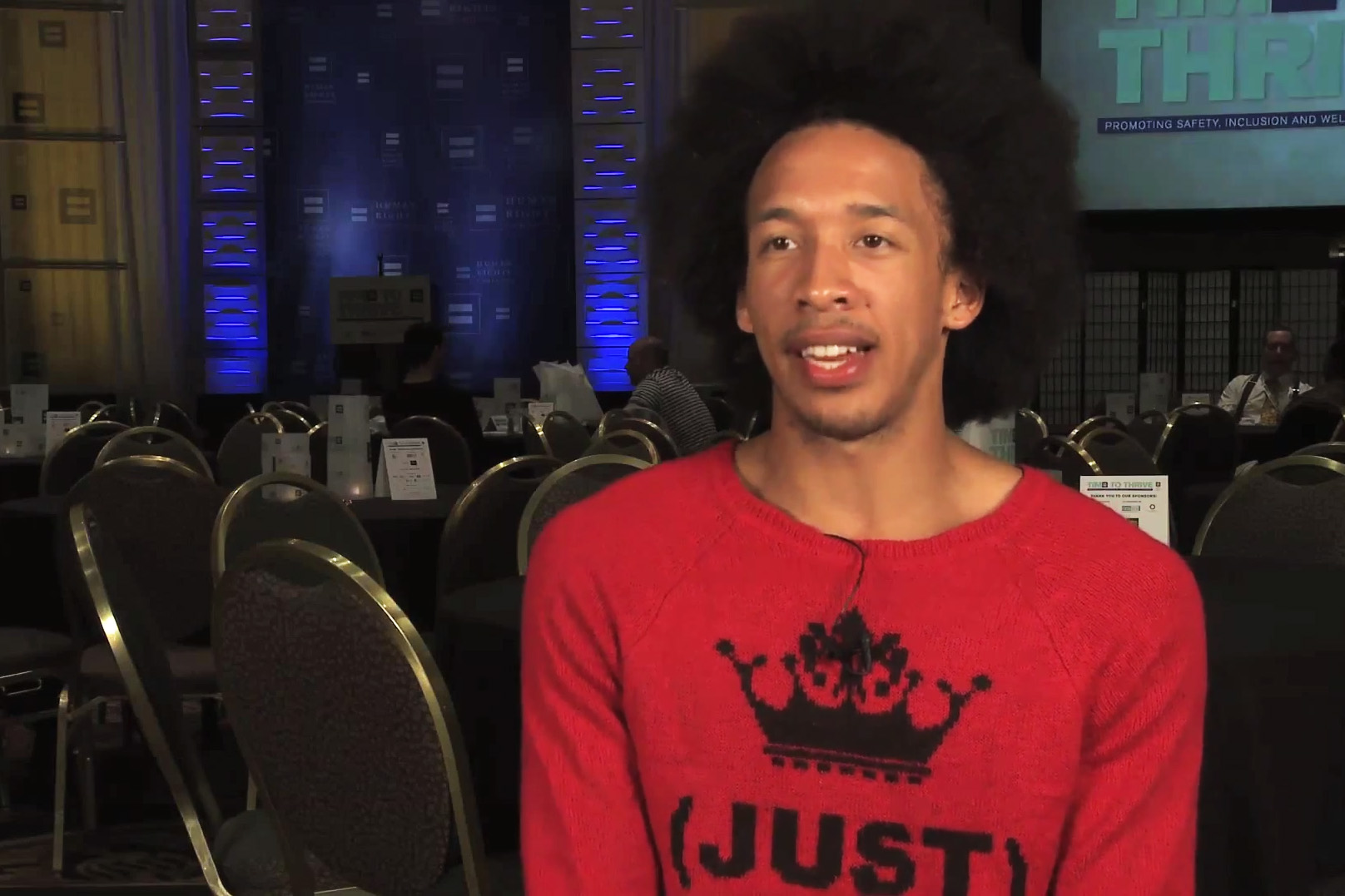ATLANTA — Doderick Moore has an easy, bright smile that seems to beam sunlight as he shakes hands.
He is polite, gregarious and well-spoken, looking and sounding like a young executive who might have come out of Wharton or Harvard business schools.
It is hard to imagine that Moore once lived on life’s edge, spending time in youth detention and being involved with a much older man who gave him money, a sense of security and, eventually, HIV.
Moore, now 29, looks back at his late teens with sadness but without regret.
“I learned a lot of good things from a lot of bad people,” said Moore, who has become a counselor with Someone Cares, an Atlanta group with three offices that provides support, information and friendship to young gay men and women who are struggling with issues related to being gay.
One of the biggest issues facing the gay community across the country is an epidemic of HIV infection in young African-American men who have sex with men. A report released this winter by the Centers for Disease Control and Prevention showed that 26 percent of all new HIV infections are among males 13-24 of all races.
The rise is of huge concern to health care workers and those at risk for HIV, particularly men who have sex with men. With the numbers of deaths from AIDS having dropped dramatically since the discovery and use of antiretroviral drugs, this new increase in HIV infections is a puzzle.
“Particularly it brings us concern because it’s hitting the African-American community the hardest,” said Dr. Travis Sanchez, an HIV/AIDS researcher at the Rollins School of Public Health at Emory University. He co-authored a recent report that show that males between 13 and 24 accounted for 26 percent of all new HIV cases.
“This disparity [between African-American males and others] is not explained by more sex partners or unprotected sex,” he said. “It’s not enough to address individual behaviors. We have to look at structural problems.”
Video: Emily Halden Brown on HIV and the Gay Black Man
Speculation abounds, including the idea that complacency in the wake of medical breakthroughs, including the use of a drug that can prevent infection, is to blame for the surge in infection rates.
That’s too easy an answer — and one that researchers and activists alike reject.
Instead, they see clues to a solution in what might be the most disturbing part of the increase. The burden of infection is heaviest on the poor, who lack access to health care, and on African-Americans, who may not only be poor but also most affected by stigma. That must be addressed to bring the numbers back down, experts said.
“We have other studies and other data that show it’s not about HIV education, condoms and individual risk behaviors,” Sanchez said. “It is most likely lack of access to health care.”
At a recent session on HIV infections at a health care conference in Santa Clara, Calif., Christopher Chauncey Watson, clinical site research director at George Washington University, said he believes the rise is most definitely about lack of access for 18- to 24-year-olds.
“There really is a disconnect between what we know and what we’re doing, particularly in the African-American community” of gay men,” Watson said. “We need to do interventions that are culturally sensitive, such as asking ‘Do you have a place to live tonight? Do you have an address we can put on this pill bottle?'”
Emily Brown, a field organizer with Georgia Equality, said she agrees. And it is something that the health care profession needs to address to stem the rising rates of HIV infection, she said.
Video: Understanding the Lives of Black Men
“HIV is always a canary in the coal mine for inequality,” said Brown. “Access is almost always more related to HIV infection than behaviors.”
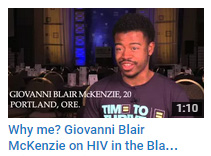 Giovanni Blair McKenzie, 20, is a youth ambassador for the Washington, D.C.-based Human Rights Campaign (HRC), a civil rights organization working on behalf of the broader LGBTQ community. His job entails raising awareness about HRC’s youth programs.
Giovanni Blair McKenzie, 20, is a youth ambassador for the Washington, D.C.-based Human Rights Campaign (HRC), a civil rights organization working on behalf of the broader LGBTQ community. His job entails raising awareness about HRC’s youth programs.
At a recent HRC-sponsored event in Portland, Ore., McKenzie came across as a confident, determined-to-get-the-word-out 20-something, aware of his mostly young audience, but cognizant of the complicated reasons for the rise of HIV in the African-American community.
“We have to realize that people of color don’t have the same access. How do they find medical care that is not going to abuse them?” he said.
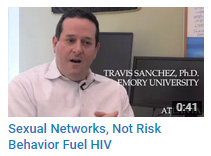 Yet other factors may play a part, too, and experts want to do all they can to make sure they are not overlooking anything in an effort to bring the numbers down. Sanchez said one factor could be a small “partner network,” the number of available sex partners.
Yet other factors may play a part, too, and experts want to do all they can to make sure they are not overlooking anything in an effort to bring the numbers down. Sanchez said one factor could be a small “partner network,” the number of available sex partners.
The partner network of African-American men is known to be smaller than that of Caucasians and other racial groups. Some of that is due to a heavy sense of stigma in the African-American community that still exists toward gay men and lesbians.
Video: Social Media’s Impact on Risky Business
Moore and participants at a National African-American MSM Leadership Conference in January in Atlanta also said they believe drug usage — not necessarily injectables but “party drugs” — may contribute to a couple forgetting about condom usage before they have sex.
“People are aware of the risk [of infection], but they’re just not thinking about it,” Moore said.
Moore does his best to make people think about “it” — infection. He educates older adolescents and young adults about the perils of having unprotected sex, partly by sharing his own experiences.
Video: What I Can Do Is Empathize
Moore takes this message to the Atlanta gay bar scene, trying to reach people early in the evening, before they have had too much to drink or taken drugs. He dresses the part — revealing all his tattoos, wearing club clothes — and opens his heart to tell his story.
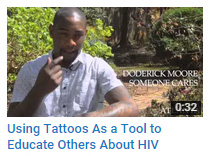 Yes, he gives the details about HIV infection rates, he preaches condom use, but he also adds a very personal dimension that he believes other young, lost or even homeless men can relate to.
Yes, he gives the details about HIV infection rates, he preaches condom use, but he also adds a very personal dimension that he believes other young, lost or even homeless men can relate to.
“I was all over the place, still trying to find myself,” said Moore, who was raised by his father until he was 13. His mother was then released from prison and Moore went to live with her. She didn’t have experience in child-rearing and didn’t really know him, Moore said. His father, who had been the stable influence in his life, began to drink and fell into addiction.
Moore found himself vulnerable to the attentions of a man more than twice his age.
Video: Doderick Moore Uses the Club Scene to Reach Out
“He had money, he had a fancy car, he bought me a car,” said Moore. At 16, he moved in with his 34-year-old lover. A sign of trust in the relationship was to have unprotected sex, he said. “Love will make you do crazy things.”
Other gay people his age also engaged in risky behavior, doing what they could to survive.
“It was sad seeing a lot of my friends move into prostitution,” Moore said.
Many people who work with adolescents are concerned that a lack of education and information when they come of age sexually might be contributing to the rise in the HIV infection rate.
At a presentation in January in Atlanta, several attendees questioned the wisdom of not proactively reaching out to teenagers before they become sexually active rather than waiting to address the threat of HIV and AIDS until afterward.
“We teach young children how to brush their teeth. Why wouldn’t we teach them to take care of their penis?” asked Maisha Drayton, senior director of staff development and a counselor at Evergreen Health Services in Buffalo, N.Y. Drayton was in Atlanta in January to attend NAESM.
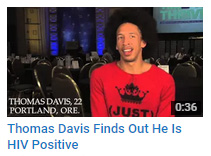 Thomas Davis, 23, also a youth ambassador at the Portland conference, said outreach from the medical community is important.
Thomas Davis, 23, also a youth ambassador at the Portland conference, said outreach from the medical community is important.
“In 2015, there’s no excuse for us to not have the information we need. This is an issue that involves all of us.”
Like Drayton and others, Sanchez said early diagnosis is essential.
“Waiting until they’re 20 is not the right approach,” he said.
Reaching young males, particularly African-Americans who have only recently identified as gay, is very hard.
Many have been kicked out of their homes and live, as Moore did, in exploitative or unsafe situations.
“We’re always looking for validation,” Moore said of young males who have recently come out as gay and may have faced family scorn or been cut off. “You’re kinda stunted.”
That’s why his organization Someone Cares focuses on uplifting young gay men and others.
Video: Turning the Tide of HIV in Gay Black Men
Moore got involved after he came to terms with his own abusive and lonely background.
“One day, I said, ‘I’m just tired of being used.’ My grandmother told me, ‘Boy, you’ve been trying for 29 years to have parents.’ And I realized she was right. But now I focus on the good things and try to help others do the same,” he said.
Moore encouraged youth in lockup at a juvenile detention center recently, telling them they can find meaning and fulfillment.
Such outreach is important, said Sanchez and Dr. Patrick O’Neal, director of health protection for the Georgia Department of Public Health.
“You’ve got to be able to overcome these barriers,” O’Neal said. Many youth who have been thrown out of homes or been bullied because they are gay may also have mental health issues, he said. “And they have great fear. How do we help people who have this terrible fear?”
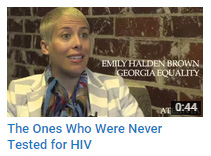 “We’re finding people months or years after they’ve been infected,” Brown said. “It’s a huge issue.” She favors blood testing for HIV for all people seen in emergency rooms and for people 13 and over during well visits. Thirteen is the legal age in Georgia when youth can be tested for HIV without parental consent.
“We’re finding people months or years after they’ve been infected,” Brown said. “It’s a huge issue.” She favors blood testing for HIV for all people seen in emergency rooms and for people 13 and over during well visits. Thirteen is the legal age in Georgia when youth can be tested for HIV without parental consent.
“The way things are now, it’s very structured against people being successful” in dealing with an HIV diagnosis, she said.
See sidebar “Biggest Obstacles To HIV Treatment Aren’t Medical, Doctor Says”


